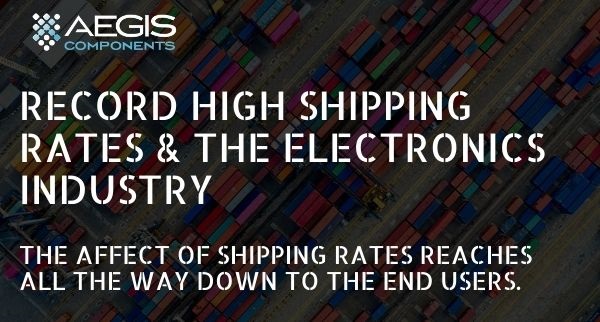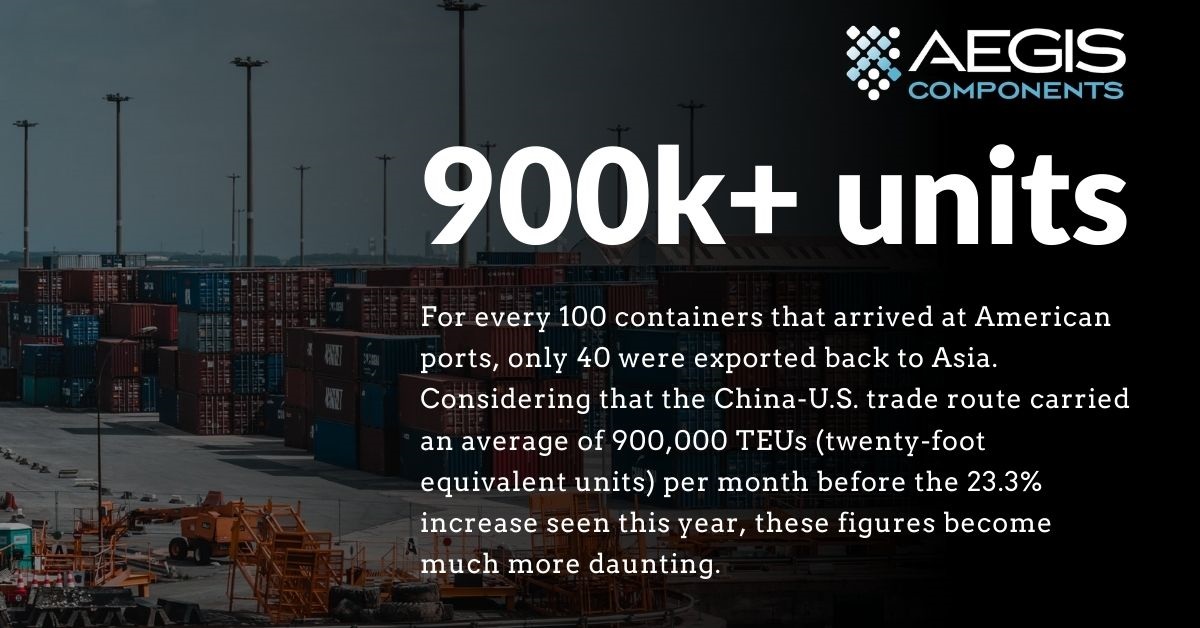
Shipping container rates have reached record highs, as the cost to ship from Asia to Europe has risen past $10,000 per FEU (per forty-foot equivalent unit). According to the Drewry World Container Index, the rate for a 40-foot container from Shanghai to Rotterdam reached $10,174 per FEU, a 3.1% increase from a week ago and 485% from a year ago. The index also indicated that shipping container rates of 8 major East-West routes have risen 292.8% from the previous year. Additionally, rates from Shanghai to Genoa have reached $9,662, a growth of 406%.
Among the primary causes of the increase in shipping container rates has been the blockage of the Suez Canal. The blockage lasted 6 days and forced many cargo ships to take a longer route to their destination. For example, the Suez Canal makes the trip from Rotterdam to Shanghai 30% shorter, Rotterdam to Yokohama 40% shorter, and Kirkenes to Yokohama 56% shorter.

Furthermore, this year has also seen a massive shortage of shipping containers. An unbalanced ratio of exports and imports from Asia and India to the U.S. and Europe has left many countries with this shipping container deficit. Because the COVID-related restrictions were lifted first in China, most of their remaining containers were shipped to the U.S. and Europe, while America and Europe couldn’t send shipments back to China quickly enough. America was not able to correct this imbalance with a limited workforce, and for every 100 containers that arrived at their ports, only 40 were exported. This left 60 containers out of every 100 to accumulate. Considering that the China to U.S. trade route carried an average of 900,000 TEUs (twenty-foot equivalent units) per month before the 23.3% increase seen this year, these figures become much more daunting.
Cargo shipping rates don’t just affect manufacturers, but the impact inevitably trickles down to every party in the supply chain. Each time your products change hands, the end user’s price increases. As shippers seek alternatives to ocean cargo, air cargo has noticed a leap in demand and prices are shifting accordingly. Analysts don’t expect any significant improvements before the peak season starts in July as retailers prepare for increasing sales. According to Freightos, air cargo rates from Asia to the U.S. have risen by around 25%. To limit the impact of these rate increases, buyers of electronic components must evaluate every link in their supply chain. At Aegis Components, our purchasing is concentrated on franchise and manufacturer direct lines. This allows us to eliminate the shipping cost and profit margin of intermediate parties. We also maintain strategically placed locations all around the world to help us locate and secure products globally and offer you the most competitive pricing and terms according to your delivery schedule.
Add Aegis Components to your approved vendor list, and let our team help you make strategic and well-informed purchasing decisions.
Contact us today or click the button below!
Aegis Components provides electronic and electrical components from verified suppliers to ensure that the quality you expect is delivered every time.
Fill up the form and our team will get back to you within 24 hours.